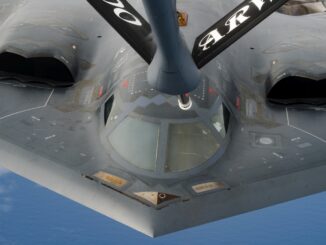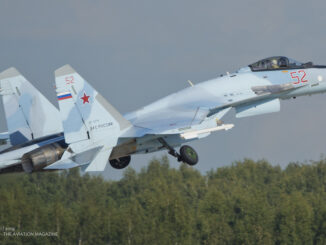
The so-called ´command flights´ (командирские полеты) are a fixed point in the annual schedule of aviation training within the Russian Aerospace Forces. They are practiced in all branches of the Russian military aviation and are being performed by the most skilled pilots and commanding staff of the regimental and divisional level.
Those command flights are usually being organized several times per year and are a traditional opener of each training season. The purpose of such flights is to develop a methodology of training that would be implemented at different stages of education for ground and flying crews. Usually, during the command flights a unified method of performing a particular flying task is being chosen, together with the best way of maintaining practical skills, training efficiency and securing the flight safety. The flights that are carried out during the year, work as benchmark of excellence and safety in the aviation personnel training process.
A broad variety of tasks and missions are being performed by flight instructors and unit commanders during the command flights, in order to choose the right scenarios and procedures to achieve the given training objectives. They cover the entire process of a combat sortie, starting from pre-flight preparations, crew briefing, then live-fly elements of training as take-off and landing procedures, aerial refuelling or flying in formation – all of them performed in the different weather conditions, during night and day – and ending with after-mission debriefing.
The first command flights of the 2021 season were already performed in the first week of December 2020. More than ten Il-76 transport aircraft from the Military Transport Aviation participated in such training organized in the Tver area.
During this exercise, the commanding staff of transport aviation regiments worked on developing a methodology of performing the most difficult elements of training, such as flights at extremely low altitude, instrument landing procedures and landing with a simulated engine failure. The best practices developed in the course of those flights would then be used in young flight personnel training.
At the same time, in the Chelyabinsk region, officers and instructors of three fighter-bomber and interceptor units were working on training programme for new Su-34 and MiG-31BM crews. The command officers practised an aerial combat at altitudes from 300 to 10,000 metres and low altitude flight in hostile environment. Part of the training included a cooperation with Su-24MR reconnaissance aircraft. The flight instructors were also developing procedures of providing escort for bomber aircraft, in the electronic counteraction environment.
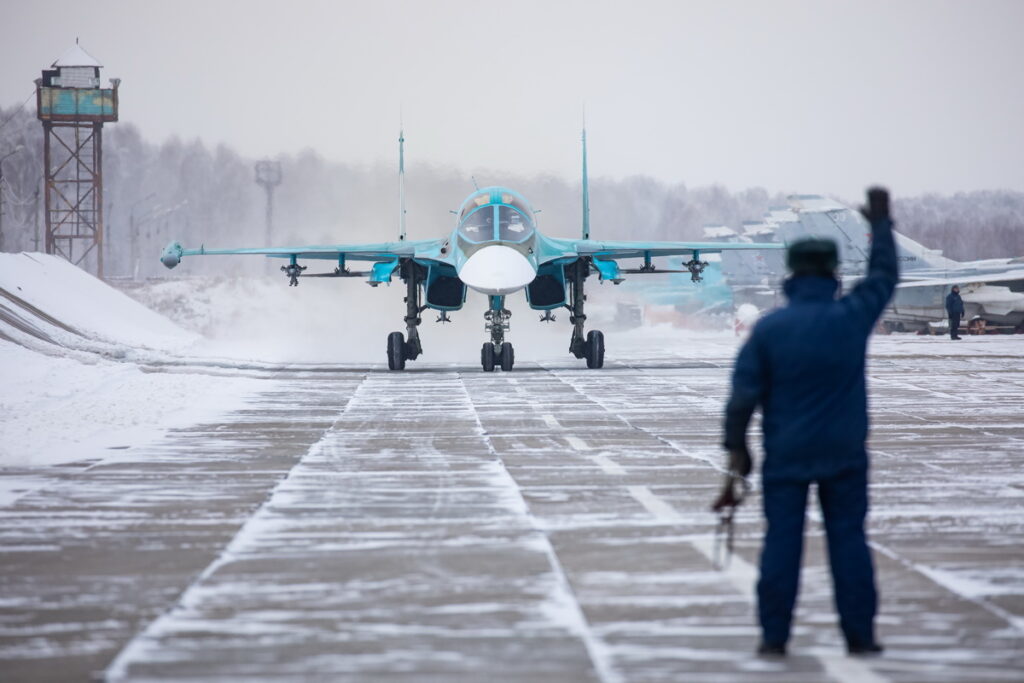
During two tactical episodes, that were a part of abovementioned training, the command officers performed more than 60 sorties on both types of aircraft. Approximately twenty Su-34 and MiG-31BM jets participated in the exercise, together with more than 200 of military personnel. Also in this case the procedures drawn up during this training would be used in tutoring programme for young pilots, that are about to graduate the military academy in 2021.
Also the helicopter units have performed their command flights that opened a new training season. For example, a separate helicopter regiment of the 14th Air and Air Defence Forces Army (14-я армия ВВС и ПВО) – belonging to the Central Military District and being based at Tolmachevo air base – organized the flights for its commanding officers already in December. The training took place in the Novosibirsk area with the use of Mi-24 attack helicopters and Mi-8AMTSh-V multi-purpose rotorcraft.
One of the most interesting scenarios was developed during the command flights organized for helicopter crews in the aforementioned Chelyabinsk area. One of the live-fly missions performed in adverse weather conditions included a transfer of military equipment on board of Mi-26. The escort duty for the world´s largest helicopter was provided by Mi-24P attack helicopters and Mi-8MTV5-1 combat transport rotorcraft. In addition, the crews practiced take-off and landing on snow-covered areas, while the rise of snow dust surrounds the helicopter and thus limiting the visibility.
This March brought another interesting command flights that were organized for the largest aircraft in the Russian Aerospace Forces inventory – Tu-160 and Tu-95 strategic bombers and Il-76 transport aircraft.
Firstly, at the beginning of the month, the command flights were performed by the 326th Heavy Bomber Aviation Division (326-я тяжёлая бомбардировочная авиационная дивизия), equipped with Tu-95MS strategic bombers and being based at Ukrainka air base, in the Amur region. According to the official MoD press release, the training included a simulation of missile launching against targets and air-to-air refuelling performed at night and in conditions of limited visibility.
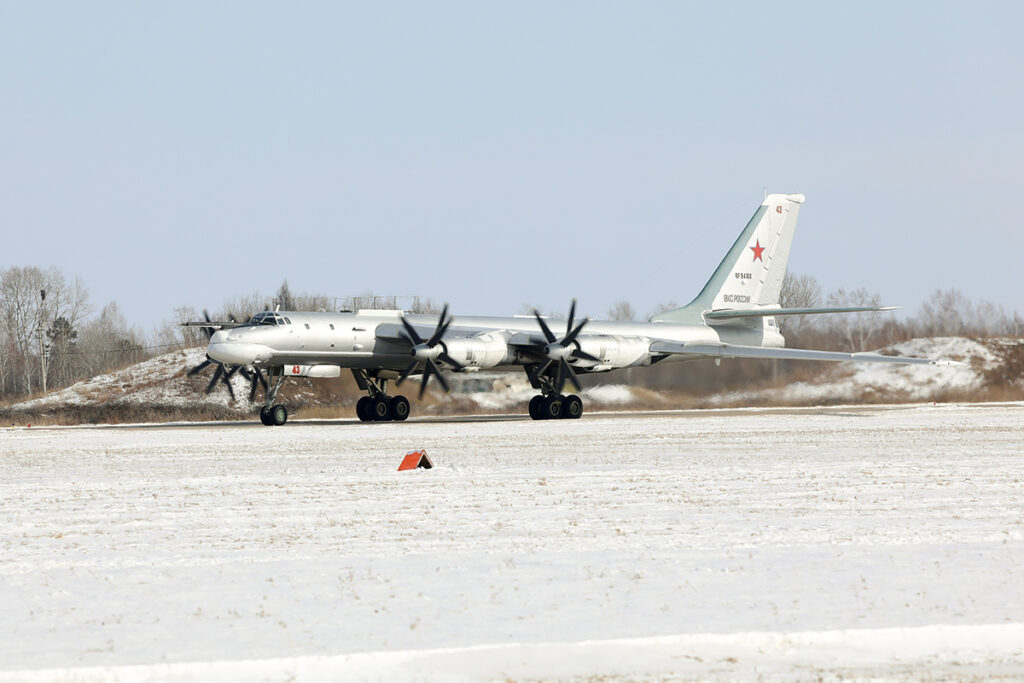
This exercise was organized under command of Colonel Andrei Malyshev, with participation of commanding officers of the mentioned 326th Division and its regiments.
The second Russian Long-Range Aviation unit, that also performed the command flights in the first decade of March 2021, was the 22nd Guards Heavy Bomber Aviation Division (22-я гвардейская тяжёлая бомбардировочная авиационная дивизия) from Engels air base in Saratov region.
More than ten Tu-160 and Tu-95MS strategic bombers participated in those flights. The exercise was performed under the direct leadership of commander of the 22nd Division, Major-General Oleg Pchela, a well-known long-range aviator. He made headlines last year, through a record-breaking Arctic flight in Tu-160 supersonic bomber.
Pchela and Lieutenant Colonel Sergei Volkovitsky were flying two Tu-160s over a more than 20,000 kilometres loop-route from Engels, that lasted approximately 25 hours. Flying over the Arctic areas, the Pacific Ocean and Siberia, Pchela and Volkovitsky set a new world record for longest non-stop for that class of aircraft.
The second phase of command-flight training for the units of Military Transport Aviation was held during the second week of March 2021. This time, the exercise was organized during a minimum weather condition and was focused on developing procedures for take-off and landing in severe conditions, low-altitude flying and practicing landing with opening of aircraft rear ramp and side doors.
It is also important to mention that the command flights being performed at the turn of the year by flight instructors of the Lipetsk Aviation Centre of the Russian Aerospace Forces. However, the series of trainings recently organized in Lipetsk was interesting enough to describe them in more details in a separate, soon-coming article.
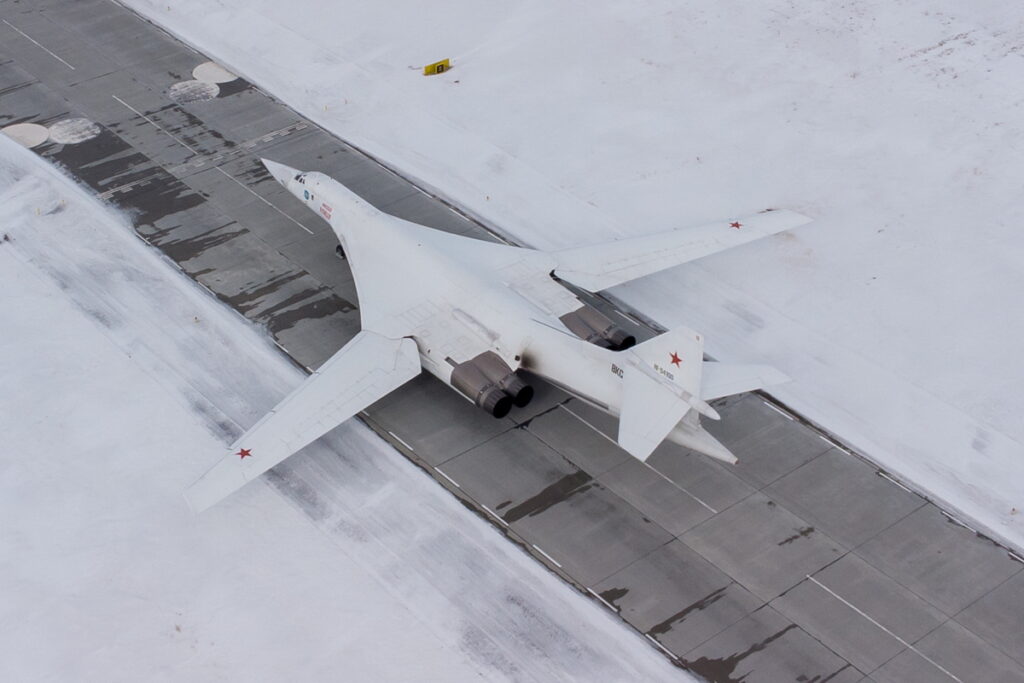

All photos © Russian MoD (Министерство обороны Российской Федерации), used under the Creative Commons Attribution 4.0 license. MoD press information were used.

